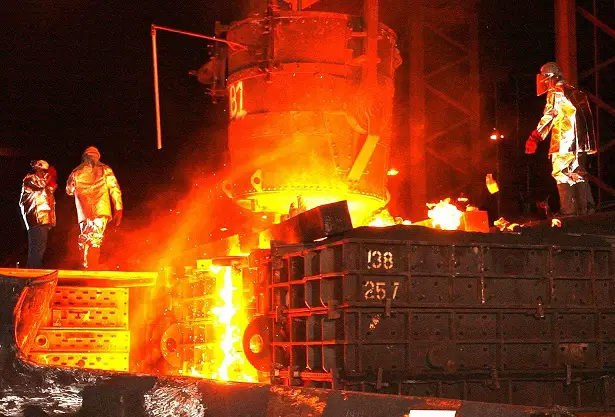As the global economy labors under sky-high energy costs, those costs are bleeding through the entire economy triggering record-setting inflation. One sector being increasingly battered by the high energy prices is the commodities sector, and that is raising prices which will be passed on to consumers through every producer and manufacturer dependent on those commodities to produce their products.
The storm hitting commodities will eventually add to the pressures on consumers, and affect investors, as it affects the profitability of the companies who supply products. And things are set to get even worse as winter approaches, and supplies of natural gas and other energy products are diverted to the heating market, raising prices even higher on the manufacturers who need them in order to operate.
Industrial metals are particularly hard hit already. Europe’s zinc and aluminum smelting capacity is already down about 50% from a year ago, and more is going offline as winter approaches, the energy market tightens, and nations begin rationing use now to try and avert being unable to heat homes in winter.
Norsk Hydro ASA said this week its aluminum smelter on Slovakia will be shuttered at the end of September as power prices make continued operation untenable. Meanwhile Nystar has announced its Budel zinc facility in the Netherlands will be shut down as well. Local exchange piles were already incredibly low, which means now imports will become vitally important. However the overseas picture for metals is not necessarily any better.
In Sichuan, among the most populous provinces in China, droughts have caused power rationing due to low reservoir levels affecting hydropower outputs. Meanwhile a heatwave is placing massive strain on the electric grid. As a result, smelter Henan Zhongfu Industry Co. has had to halt operations for a week for some of its units due to government curbs on energy usage.
In the US, Century Aluminum Co., a major aluminum supplier, is idling its Kentucky plant because energy prices are so high it is no longer profitable to run it.
In Sichuan, over 70% of the local steel mills have also been affected, either through power rationing reducing outputs, or having to halt production. In turn, that is affecting prices for the iron ore used to produce steel.
In the US, at least two steel mills have suspended some operations due to rising energy costs.
As energy impacts the sources of these materials, that effect then travels downstream, where companies like British Steel are raising prices. In the past, price hikes would simply travel down the supply lines, where industries like the construction industry would merely pay more for the steel. However as the economy grows weaker and demand abates in the face of rising prices and smaller margins, that makes for a considerably more ominous outlook for all of these companies.
China’s power crisis is also impacting so-called “green metals,” as battery-makers are bracing for higher costs on key materials like lithium. Sichuan, where electricity is being rationed, was responsible for more than a fifth of China’s lithium output last year. Analysts expect at least short term rises in lithium costs.
Sichuan also is vital to polysilicon production, which is used to make solar panels. In just one week, silicon metal, used in everything from computer chips to cars, rose 12%.
Commodities like fertilizers are also being affected, due to the manufacturing process for ammonia being dependent on natural gas as a feedstock. As the price of natural gas rises in Europe, chemical companies are having to abandon ammonia production, and while it is not as bad in China, high gas prices are curtailing production there as well.
As farmers produce still other commodities like corn and soybeans, this fertilizer shortage is threatening to drive up prices on their products as well, raising prices even higher on a market already tightened by droughts and diminished yields due to natural conditions this year, as well as the effects of the war in Ukraine tying up Ukrainian supplies. Analysts estimate at least 25% of European fertilizer production capacity has already been lost, and global usage is forecast to drop by the most since 2008 according to an analysis from the International Fertilizer Association.
Even sugar is seeing the effects of energy prices. European sugar giant Suedzucker AG has said it is implementing plans to switch its production lines from gas-utilization to other energy sources, but analysts point out that will be an expensive process, and those costs will need to be passed on to consumers.
With inflation already at record highs, that threatens to raise prices even more, and ultimately require an even greater economic cooldown to bring them under control. It paints a very ominous picture for the global economic future.

